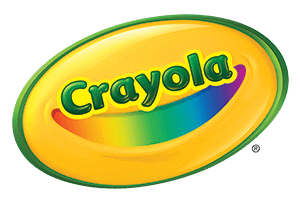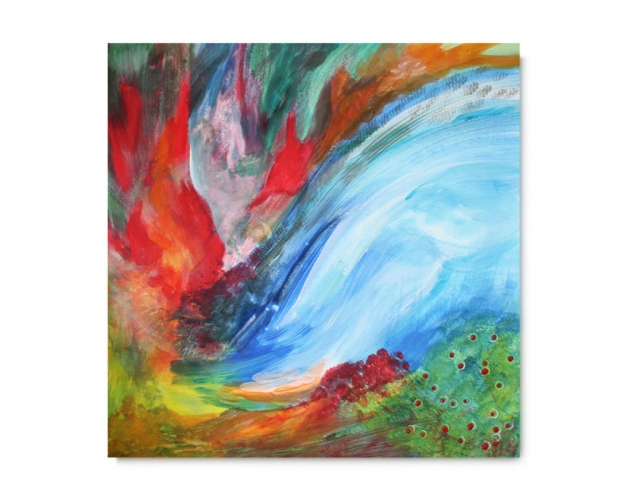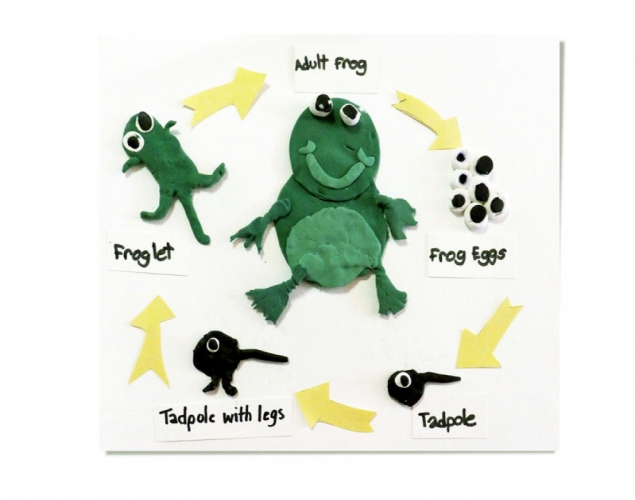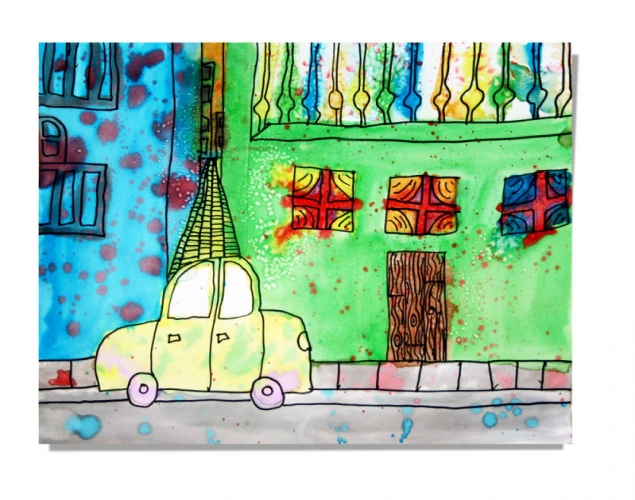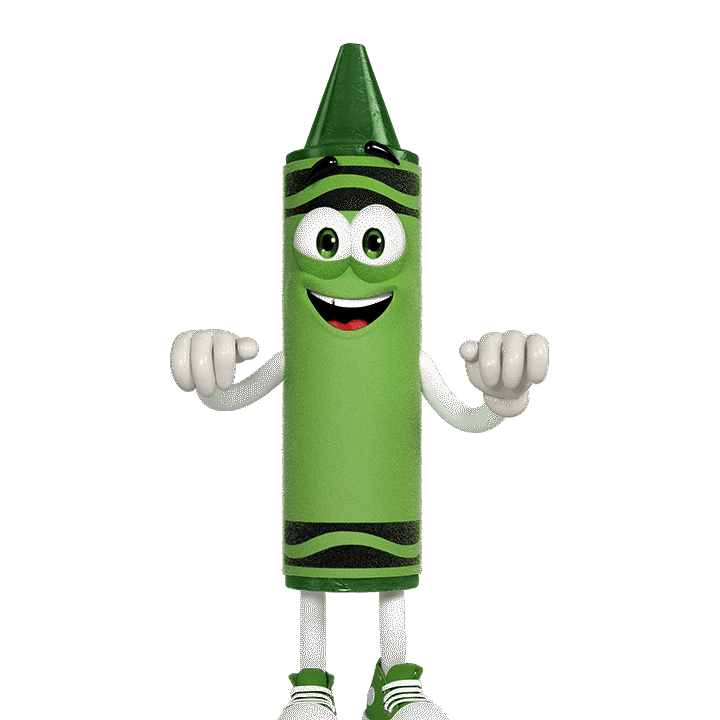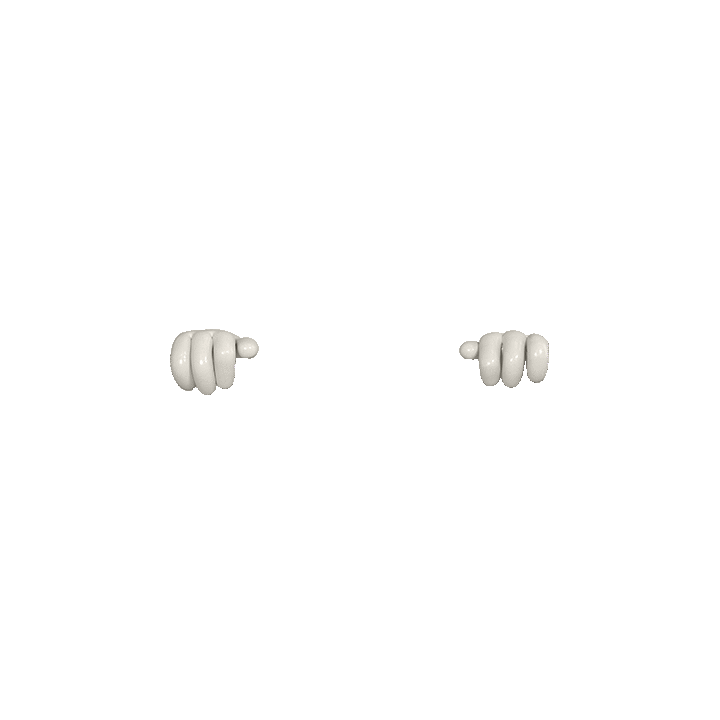
Supplies:
- Crayola Washable Paint
- Crayola Paint Brushes
- Water Containers
- Paper Towels
- Bristol Board - 30.5 cm x 30.5 cm (9" x 12") - 1 per student
- Newspapers to Cover the Desks
Steps:
1
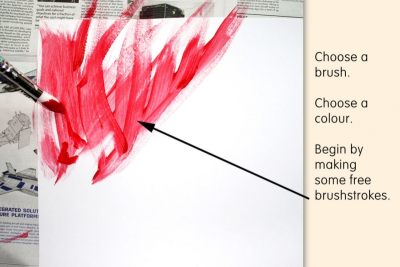
- Choose a brush.
- Choose a colour.
- Begin by making some free brushstrokes.
2
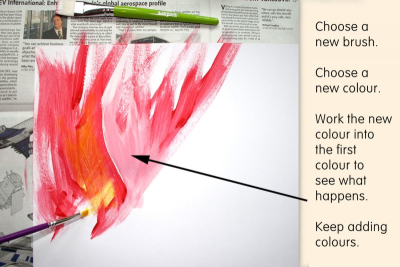
- Choose a new brush.
- Choose a new colour.
- Work the new colour into the first colour to see what happens.
- Continue to play with the colours and brush strokes.
- Add layers of colour.
3
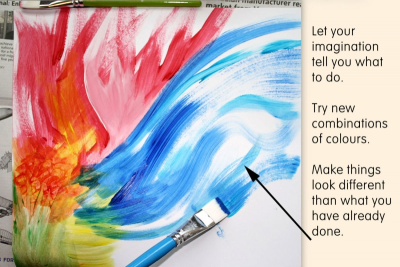
- Be spontaneous.
- Let your imagination tell you what to do.
- Try new combinations of colours.
- Make things look different than what you have already done.
4
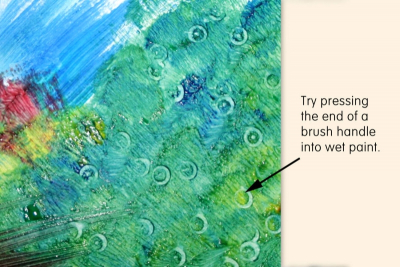
- Try pressing the end of the brush handle into wet paint.
5
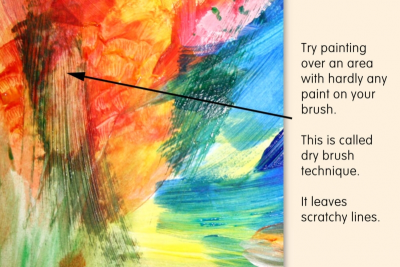
- Try painting over an area with hardly any paint on your brush.
- This is called dry brush technique.
- It leaves scratchy lines.
6
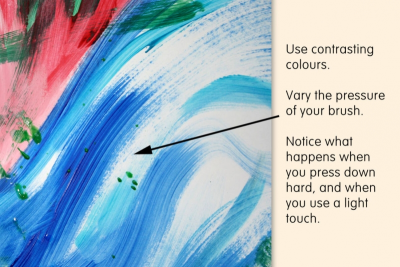
- Use contrasting colours.
- Vary the pressure of your brush.
- Notice what happens when you press down hard.
- And when you use a light touch.
7
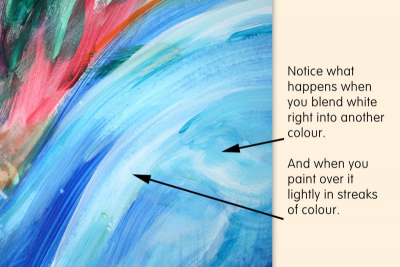
- Notice what happens when you blend white paint right into another colour, blue, for example.
- And when you paint it lightly, in streaks over a surface.
8

- Try making different textures with the brush.
- Let the brushstrokes show.
- Try painting with a very dry brush over textured areas.
- See what happens when you dip the end of the brush handle into paint and press it onto the paper.
9
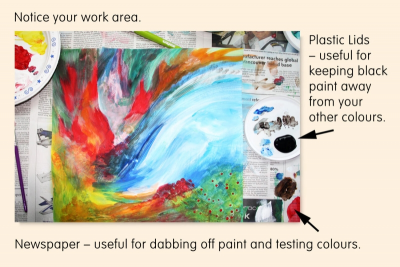
- Notice your work area.
- See how helpful the newspaper was to dab off paint and test colours.
- The plastic lids are really useful for keeping black away from your other colours.
- View your painting with fresh eyes.
- What does it make you think of?
- What do you see that makes you say that?
- What area attracts your attention first? Why?
- What do you like best about the painting? Why?
Subjects:
Grades:
Grade 1,
Grade 2,
Grade 3,
Grade 7,
Grade 8,
Grade 9,
Grade 10
